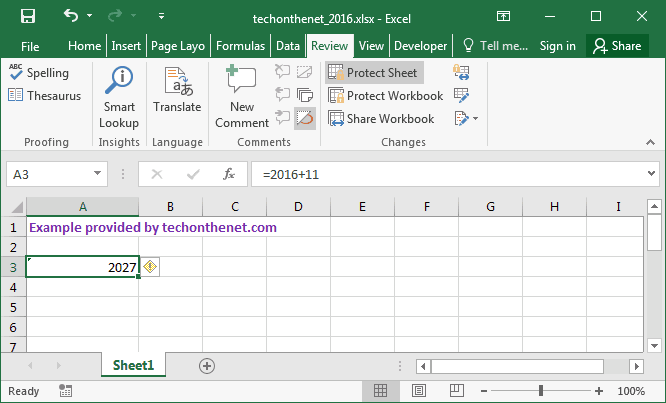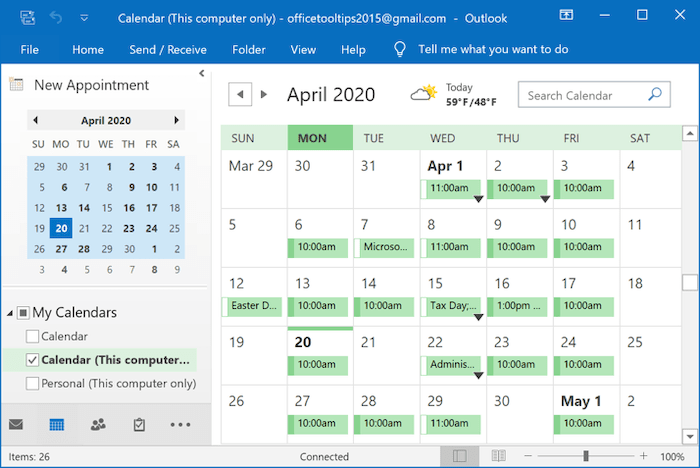

- Excel 2016 review tab for mac#
- Excel 2016 review tab mac os#
- Excel 2016 review tab install#
- Excel 2016 review tab full#
- Excel 2016 review tab windows#
The Ribbon goes away and the arrow turns to face downwards. Not everyone is a Ribbon fan, though, and those who wish it were gone, or just want to give themselves a little more screen real estate, can hide it by clicking a small up arrow at the Ribbon's far right.
Excel 2016 review tab mac os#
It's a clever way to bridge the worlds of Office and Mac OS X. The usual Mac menu that sits atop Mac applications is hidden as well, although you can reveal it by moving your cursor to the top of the screen. The Ribbon is far more prominent and now sits close to the top of the screen rather than (as before) beneath a long row of icons for doing things such as opening and closing files, printing and so on.
Excel 2016 review tab windows#
That's largely in part because the Ribbon has been redone, and now looks and works as it does in the Windows version of Office.

It's less cluttered, cleaner and sleeker-looking, more logically organized, more colorful and simpler to use. The moment you run any Office application, you know you've left the aging Office 2011 behind. It will sell as a standalone Mac product later this month.)
Excel 2016 review tab install#
It’s currently only available as part of a subscription to Office 365, which allows you to install Office on multiple devices. (Note: Mac for Office 2016 requires Yosemite OS X or better.
Excel 2016 review tab for mac#
Office 2016 for Mac sports a far better interface than Office 2011, integrates well with Microsoft’s OneDrive cloud storage and dramatically improves Outlook.
Excel 2016 review tab full#
But Mac owners had to wait until early July for the final release of the full suite, including the core applications Word, PowerPoint and Excel. Hints of what the new Office would offer have been out for quite a while, notably the preview of Outlook, introduced in October 2014. A comment box is displayed with the what, who, and when details of the change.Mac users of Office who have felt left out in the cold by Microsoft (because the last version, Office 2011 for Mac, was released in October 2010) now have reason to be pleased: The final version of Office 2016 for Mac brings the suite out of the dark ages and into the modern world. To display change information, hover the mouse cursor over a cell with the small triangle in the upper-left corner. A change is noted by a small triangle in the upper-left corner of the cell. When someone makes a change to a document, it is tracked. View changes in a Microsoft Excel spreadsheet Hover the mouse cursor over a change to see which change was made, who made the change, and the date of the change.

If desired, check the box for the Who entry and choose between Everyone and Everyone but me.For the When entry, choose between Since I last saved, All, Not yet reviewed, or Since date (you need to enter a specific date).In the Highlight Changes window that opens, check the box for the Track changes while editing option.Click the Highlight Changes option in the new Tracking Changes section added above.With the spreadsheet still open, click the Review tab in the Ribbon.With the change tracking options added to the Review tab, now you can turn on change tracking by following the steps below. Click OK to save the addition of the new group and its entries. The Highlight Changes and Accept/Reject Changes entries should now be listed under the new Track Changes group on the right.In the box under Choose commands from, select the Highlight Changes and Accept/Reject Changes entries one at a time, clicking the Add button after selecting each entry.Click the new Tracking Changes group to highlight it.Right-click the new group created under Review, and select the Rename option.Click the New Group button below the Customize the Ribbon box.In the box under Customize the Ribbon, click the Review entry.

In the Excel Options window that opens, click the drop-down list under Choose commands from and select the All Commands entry.In a blank space on the Ribbon, to the right of the Ink section, right-click and select Customize the Ribbon.Open the spreadsheet where you want to track changes.In Excel 2019, you need to add the change tracking options to the Review tab in the Ribbon.


 0 kommentar(er)
0 kommentar(er)
